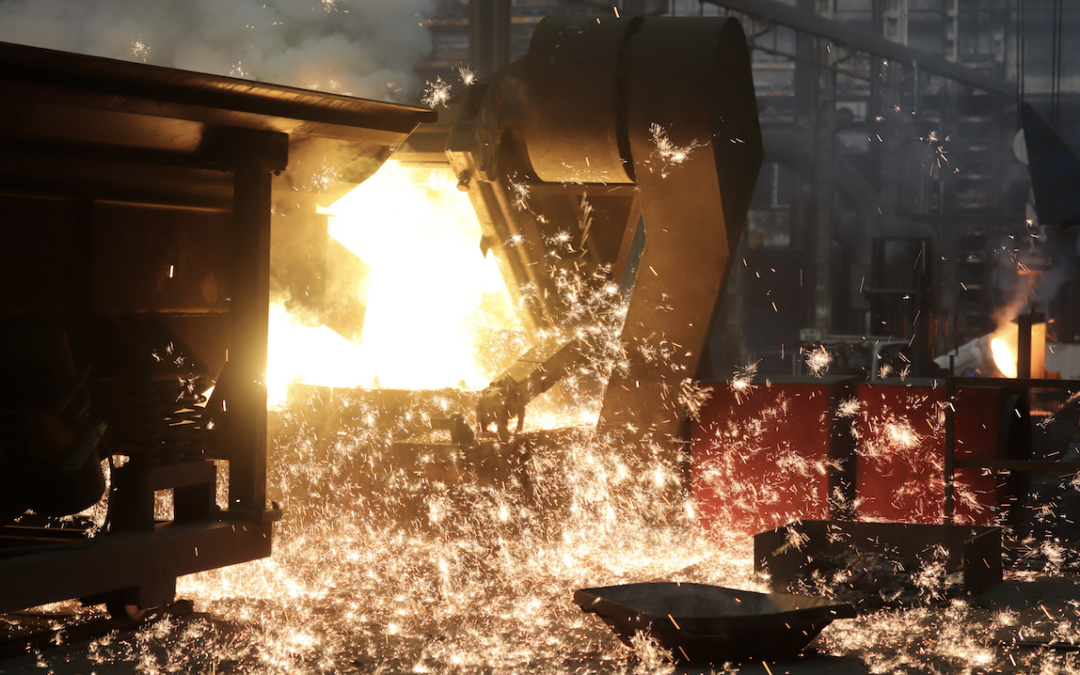The production of metal for construction, especially structural steel, is a complex and fascinating process that involves several key steps. Understanding these steps can provide insight into the durability, strength, and versatility of the structures built with this essential material. From mining raw materials to the final assembly on-site, each phase plays a critical role in ensuring that the steel meets the high standards required for construction purposes.
Mining and Raw Material Extraction
The first step in the production of construction metal is the extraction of raw materials. Iron ore, coal, and limestone are the primary raw materials used to produce steel. These materials are mined from the earth using large machines and transported to steel production facilities.
Iron Making
Once the raw materials are obtained, they are processed to extract iron. The iron-making process involves a blast furnace where iron ore is combined with coke (a form of carbon) and limestone. The mixture is subjected to high temperatures, causing a chemical reaction that produces molten iron. This molten iron, also known as pig iron, is the base material for steel production.
Steel Making
The next step is converting pig iron into steel. This is done in a basic oxygen furnace (BOF) or an electric arc furnace (EAF). In a BOF, oxygen is blown into the molten iron, which reduces the carbon content and produces steel. In an EAF, recycled steel scrap is melted using electric arcs, making this process more environmentally friendly.
Ready to see these robust materials in action? Discover how structural steel erection can transform your next project with unparalleled strength and flexibility.
Casting
After steel is produced, it needs to be shaped into semi-finished products. This is done through a process called casting, where the molten steel is poured into molds to form slabs, billets, or blooms. These semi-finished products are then cooled and further processed to achieve the desired shape and size.
Forming and Shaping
The semi-finished steel products undergo various forming processes such as rolling, forging, and extrusion. Rolling involves passing the steel between a series of rollers to achieve the desired thickness. Forging uses compressive forces to shape the steel, while extrusion forces the steel through a die to create long shapes like pipes and beams.
Heat Treatment
To enhance the properties of the steel, it often undergoes heat treatment processes such as annealing, quenching, and tempering. These processes involve heating and cooling the steel under controlled conditions to improve its hardness, strength, and ductility.
Surface Treatment and Finishing
The final step in steel production is surface treatment and finishing. This may include processes like pickling (removing surface impurities), coating (applying protective layers), and painting. These treatments protect the steel from corrosion and improve its appearance.
Elevate your construction standards with expert structural steel erection services that ensure precision and durability in every project.
Quality Control
Quality control is a critical aspect of steel production. Throughout the manufacturing process, the steel is tested for its mechanical properties, chemical composition, and dimensional accuracy. Ensuring high quality at each stage guarantees that the final product meets the stringent standards required for construction.
Distribution and Fabrication
Once the steel has been produced and thoroughly tested, it is distributed to fabrication shops. Here, it is cut, drilled, and welded into the specific shapes and sizes needed for construction projects. Fabrication shops play a crucial role in transforming raw steel into usable components.
Maximize the efficiency and safety of your builds with our specialized structural steel erection techniques. Contact us today to learn more.
On-Site Assembly
The final step in the journey of construction steel is on-site assembly. Structural steel components are transported to construction sites, where they are erected by skilled workers. This involves lifting the steel pieces into place using cranes and securing them with bolts or welds. The precision and expertise involved in this process ensure the structural integrity of the building.
Ready to start your next construction project? Ensure success with our professional structural steel erection services that bring your designs to life.
The production of metal for construction, particularly structural steel, is a multi-stage process that transforms raw materials into essential building components. Each step, from mining to on-site assembly, requires precision and expertise to ensure the highest quality and performance. Understanding this process underscores the importance of choosing reliable steel production and erection services for your construction needs.
Take the first step towards a strong, reliable, and efficient construction project. Explore our structural steel erection services today and see the difference quality makes.
